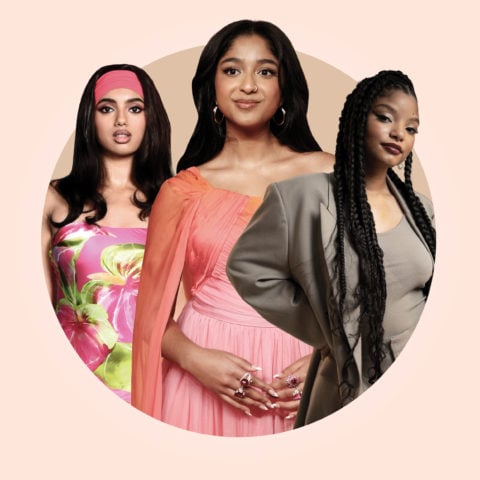What Will It Take to Make Fashion Week Relevant Again? Industry Insiders Weigh In
Whether in Toronto, New York or across the pond, fashion week used to be a hot ticket that editors, influencers and fashion fans alike looked forward to every season. But lately it feels like everyone has simply...lost interest. As the final shows for the fall 2019 season wrapped up in Paris, we put together a panel of stylists, designers, publicists and models to find out what's changed—and talk about whether fashion week can make a rebound
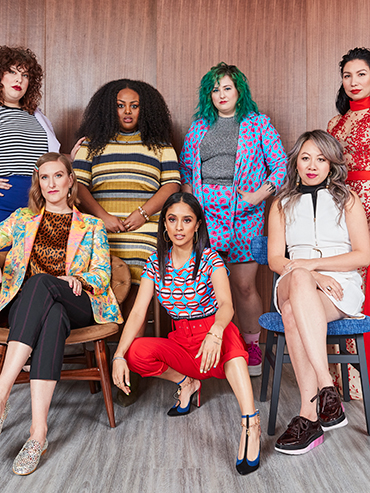

When the news broke of Karl Lagerfeld’s passing on February 19 at age 85, the widespread response was shock and dismay, with many people, from fashion enthusiasts to editors, decrying the end of an era. Indeed, Lagerfeld, who was the creative director at Fendi and Chanel—and is credited for reviving the latter house from near bankruptcy, turning it into one of the most successful fashion brands of the 21st century—defined and popularized luxury fashion for most of the last half-century. His over-the-top Chanel runway shows were considered the most sought-after invitation at Paris Fashion Week, and his influence quickly and pervasively trickled down to mass retailers to the extent that, whether we knew it or not, we were all wearing a version of Karl’s vision.
But his legacy also represents many facets of the fashion industry that are becoming increasingly irrelevant to a modern audience of (primarily) young women who are demanding more from the brands they support and admire. For one, the excessive runway shows with elaborate sets and props (like fall 2014’s faux supermarket complete with double-C branded non-perishables) seem egregiously wasteful in 2019, when consumers are going so far as to give up plastic straws and glitter makeup in a last-ditch effort to reverse the harrowing trend of climate change. There’s also the fact that Lagerfeld, known for his glib and controversial one-liners, frequently made fat-phobic comments and failed to cast his runway with diverse models that reflect the women his brands were ostensibly trying to reach through such marketing.
The public’s mounting displeasure with the fashion industry, and fashion week specifically, has been a topic of conversation for years now and it’s bigger than just Chanel. Lagerfeld was certainly not the only designer to alienate his audience with offensive comments and design missteps. Millennial-beloved Gucci faced scrutiny this past season for selling a high-fashion balaclava that resembled blackface, and here in Canada, local designer Mikhael Kale was called out for using cornrow hairstyles on white models at his Toronto Fashion Week show in February. This kind of thing happens all the time and consumers seem to be, frankly, over it.
There are other reasons, aside from a few out-of-touch designers, that fashion week draws less attention than it used to. Social media, like Instagram and YouTube, has democratized fashion week in a way that has drastically diminished its cache of exclusivity. At FLARE, we stopped publishing show reviews years ago, finding that our audience simply wasn’t interested. Lately, even street-style photography, that voyeuristic eye candy, is no longer a draw—people are able to see everything on Instagram, in real time, right at their fingertips. And this is the pattern across the board, with many other fashion editors reporting a similar trend. Designers seem fed up, too, with many big-name brands pulling out of the organized fashion weeks over the past several seasons, creating their own off-calendar presentations or foregoing traditional runway shows altogether.
At the same time, new players like Savage x Fenty and Chromat are finding ways to breathe fresh life into the old format, tapping into the zeitgeist by featuring diverse casts of models and body-positive designs, and even making political and ideological statements in their presentations that viewers can’t seem to get enough of. So, perhaps fashion week isn’t irrelevant after all, it just needs to change to meet the demands of consumers in 2019.
As the international shows for the fall season were winding down, with the final presentations in Paris culminating this week, we spoke to a group of Canadian fashion insiders to find out if they think fashion week still has a functional purpose in the industry, and what it will take to make it relevant again. Here, our no-holds round-table conversation about the state of fashion week.

The panel:
Bree Ahmed, model
Hayley Elsaesser, designer and creative director at Hayley Elsaesser
Sandeep Gill, teacher, stylist and fashion influencer
Lora Grady, body-positive columnist
Odessa Paloma Parker, writer, stylist and branding consultant
Sage Paul, designer and artistic director, Indigenous Fashion Week Toronto
Cynthia Yan, vice-president, ASC Public Relations
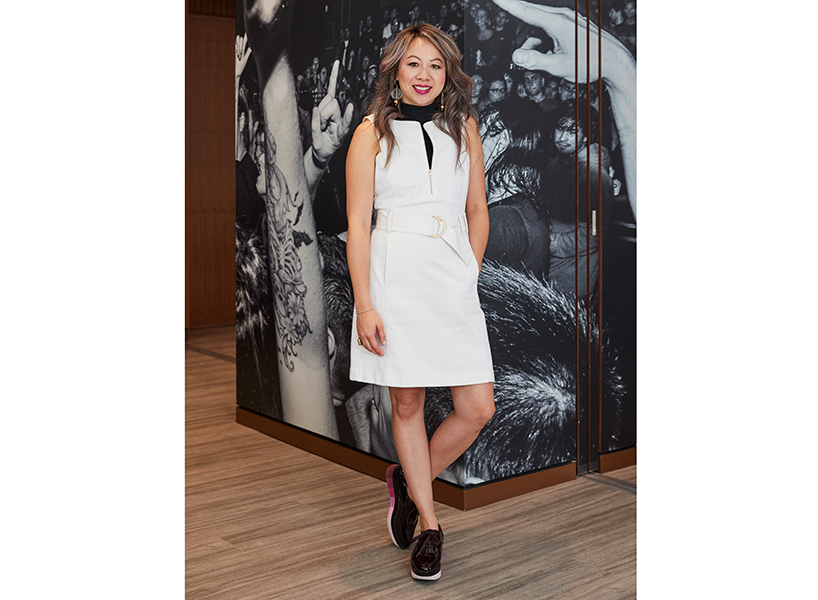
On fashion week’s influence
Sandeep: I still get a lot of styling inspiration from shows, but aside from that I don’t find that my personal fashion sense or even what I put on my clients comes from fashion shows. A lot of the time the actual clothing is just the same thing over and over—like how many white T-shirts do we need to see?
Bree: I find that I am more drawn to up-and-coming designers as opposed to the more established designers, because I feel that the younger, newer people are more willing to go outside of the box and show things in a new way. It’s not just about making more money, it’s more of an artistic presentation.
Odessa: I don’t think fashion shows are irrelevant, but I do think the way we look at fashion shows now is totally different. When I was growing up, I watched Fashion Television and I felt like I was taken into this exclusive scene—there’s the music and the backstage energy. And now when I actually go to shows, I still feel that excitement. But if I wasn’t in the fashion industry and all I was looking at was very static pictures on Vogue Runway or on an Instagram channel, I’m not sure I’d get the same feeling. You’re just looking at clothes at that point. It’s not really that same kind of experience that transports you into world of the designers—that part is lost, unfortunately.
Cynthia: I find now I’m just curious to see how much creativity, or lack thereof, is still happening at fashion week. Lately, I’m more skeptical going in, and then sometimes I’m pleasantly surprised.
Sage: I think it depends on the level of care and sincerity that goes into creating a show. Like if a designer is just putting clothes on the runway to make money, you can tell. For me, I put all of myself into my collection. But it seems like there’s less and less attention from the public because we have so much at our fingertips—people are constantly bombarded with beautiful images and I think that they are kind of getting desensitized to and detached from the work that goes into a show.
Odessa: And I think because of that designers are focusing a lot more about what things are going to look like on Instagram, what is going to be interesting in a 15-second clip.

On street style’s relevance
Odessa: I’ve noticed that street style has kind of dwindled and that people are starting to look super homogenous. Whatever the big trend is, so for spring it’s beige, everyone was wearing a beige trench coat or suit or whatever. In London, a lot of people were wearing Burberry because it’s Riccardo [Tisci, chief creative officer]’s moment. So street fashion is no longer this kind of fun, individualistic self-expression, it’s just another mode for setting the trends.
Lora: #fatatfashionweek was a huge hashtag this year. And it kind of changed my whole experience. I always like paying attention to see how people are styling things and to see what the new looks are. But to be able to tap on a hashtag like that and to get so much inspiration from so many amazing plus-size women of all different shapes and sizes from all around the world, it kind of was a game-changer for me.
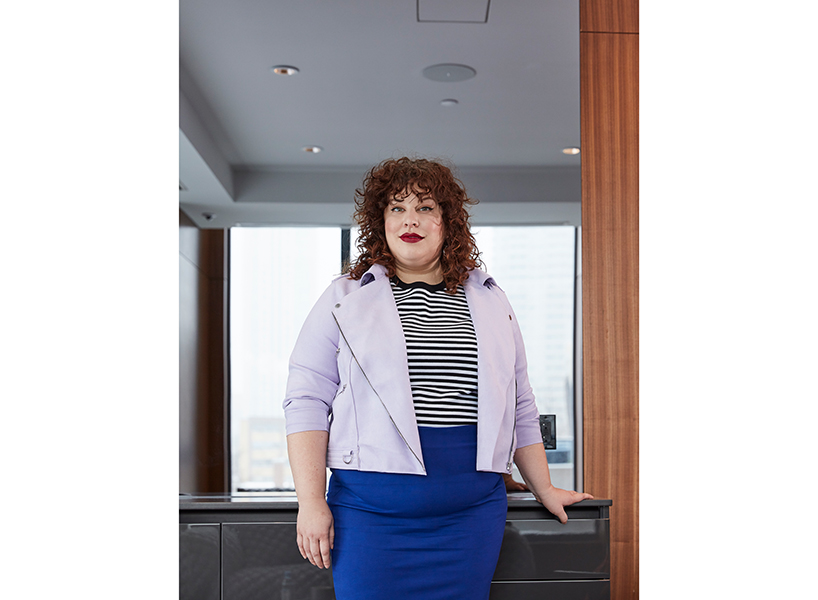
On the business of fashion week
Cynthia: I used to manage PR for Toronto Fashion Week and a lot of the time, it wasn’t clear what the organizers were trying to achieve. Is this show supposed to gain awareness for the designer? If so, they need to support them better. Often designers would have requests for set elements or music and those requests were shut down by the sponsors or management but with no explanation why. So there is mounting frustration on a number of levels—for the designers, for press, for the organizers.
Hayley: I wanted to do a different formula because I’ve always done typical runway shows up until this point in my career. I wanted to have a presentation that was kind of like a carnival but the timing and the logistics at Toronto Fashion Week just didn’t allow for it. I was ready to make it happen and they couldn’t support it. There’s an inflexibility and the formula has to change in order for change to happen on a bigger level.
Sage: At Indigenous Fashion Week Toronto, we were presenting a number of artists over a couple of days, and it was really difficult and cost a lot of money to be able to change sets. Often designers don’t have the money to do that. In London they have a lot of financial support from their government—a lot of European countries do—but here we just don’t. The infrastructure is just not set up to be able to allow us to present work in a way that we would like it to happen.
Sandeep: Maybe it’s OK to let traditional fashion week die, and then designers can just use their own resources—whether that’s financial, or social media clout, or whatever—to create the art that they want. In music, we used to have the traditional gatekeepers and record labels, but now artists can just put their music on Spotify. We need something similar for fashion.
Hayley: Toronto Fashion Week definitely started my career. But I kind of feel like now the benefits just don’t outweigh all the work that I have to put in to it. I’m a small business. It’s me and a couple people, so if we’re putting all our attention on fashion week, we’re not focusing on what’s happening in the store, and our online store and marketing, so it takes us away from that. And to not have the return on all the hard work that we put into it is just really frustrating.
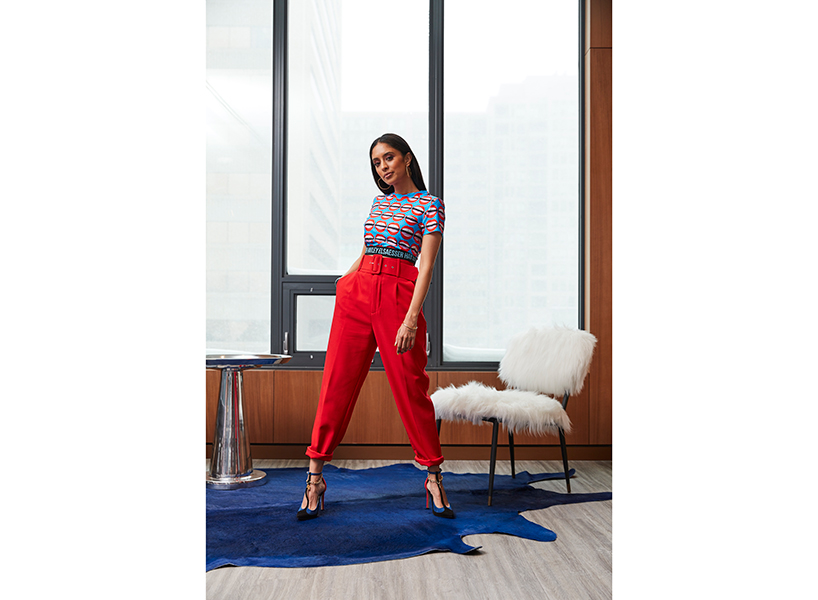
On cultural appropriation on the runway
Sandeep: Cultural appropriation is this burning subject that keeps me up at night. But I think, first things first, none of these designers wake up in the morning like, “I’m going to go do this and piss these people off.” They made a mistake but I don’t think it’s ever their intention. Somewhere along the line in the creative process, like from the top to when it’s delivered, something is slipping and that’s where the attention needs to be: figuring out where the mistake happened, who are people responsible, and how are they missing these big details.
Odessa: And then having a productive conversation about it. It just drives me crazy when someone says something and then gets shut down or when people just insulate themselves with other people who have the same opinion.
Sandeep: I’m Punjabi, and I wasn’t offended [when Gucci showed turbans on white models for their fall 2018 show]. I thought that it was so dope, but the designer should have explained where that idea came from. It offended a lot of people.
Hayley: I’ve done things that I’ve regretted in the past, but it’s all about learning. If you’re not willing to have a tough conversation nothing is ever going to change. And, I think, because of social media, we’re more aware of what’s wrong and what’s right and we’re more vocal about it. There’s an accountability that’s expected now, and you have to educate yourself. You have to be aware of your position in the world, and that not everyone has the same position.
Lora: And then if you decide to do it, then own it. And talk about it. If you want to do it, then be ready for the backlash.
Bree: When it comes to blackface, I’m like “How the hell did [the designer] not see that?” But then I have to understand that because they haven’t been in my shoes, it might be difficult for them to understand why it’s offensive. It does get exhausting, though, when it keeps happening. Like, with cornrows, when a Black person does it it’s seen as ghetto or ratchet. But it’s high fashion because it’s on a white model? It makes me upset, ’cause that’s just not cool.
Sage: When we look at appropriation, it’s a conversation that always comes up, especially with Indigenous designers. That’s why it was so important for me to make a space where we’re able to present ourselves and not have to wait for another institution to be able to do that. We just need to do it ourselves, otherwise it’s going to continue being done for us.

On fashion’s #MeToo moment
Odessa: I think everybody has a responsibility to call out shit and take a stand. It can become a bit Games of Thrones, like then who’s regulating the regulators kind of thing, but I think everyone has a societal responsibility to be like “I don’t agree with this [accused rapist] being in the front row.”
Hayley: You have to consider the models, too, if you have known abuser in the front row staring up at them…. Even being backstage, there’s some really messed-up situations with young models getting changed and people taking photos and that kind of stuff. We have to do a better job of keeping models’ well-being top of mind. A lot of designers don’t treat them as people.
Bree: There was actually one time I had to walk in a show and the backstage was open—the crew was just there, and I was like, “I’m not changing in front of them.” The designer said, “I guess we can’t have you in the show” and I said, “I guess not.” And I walked away. But I’ve been told that as a model you’re a prop, you don’t have an opinion, don’t say anything. Just do what you have to do and that’s it.
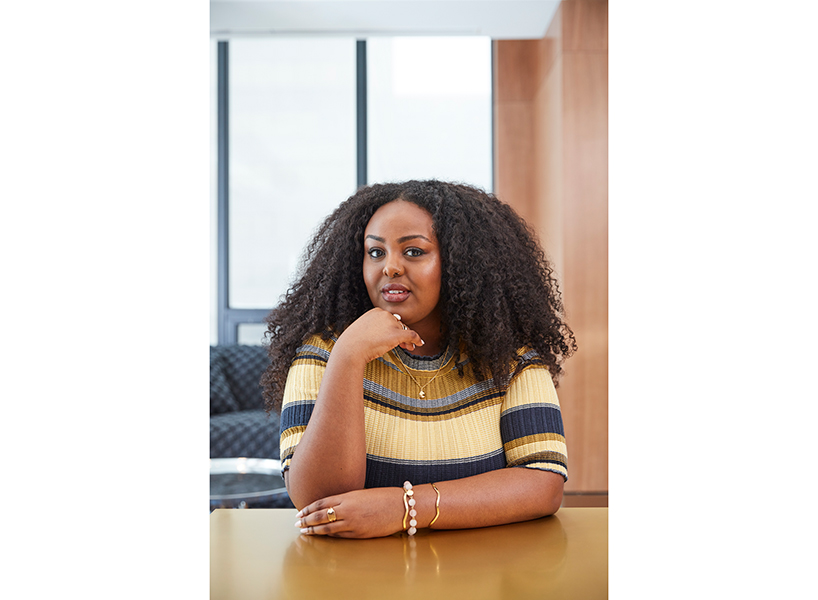
On waste vs. artistic expression
Lora: I think some designers feel like they have to put on a spectacle just for the sake of putting on a spectacle, and that’s when runway shows can start to feel wasteful. If you’re just being excessive for the sake of getting some attention and hoping to get more Instagram shares, it’s probably not going to work.
Odessa: I think there’s two different things to consider: The excess of fashion shows is not the same as the excess of the fashion industry as a whole. I’m fine with a designer going all out to produce an over-the-top runway show. You’re not going to tell Beyoncé to reign it in, right? It’s an artist’s vision and it’s entertainment. But overproduction of garments is another thing. And we need to use our dollars and consumer power to say to these companies, “Hey maybe produce like 50% less of the stuff that you make because it’s just going to end up being burned or in a landfill.”
Hayley: The spectacle of the fashion show is one thing, that’s very isolated. But fashion is one of the most damaging industries next to oil. It’s the overproduction of goods that aren’t selling that, to me, is the problem.
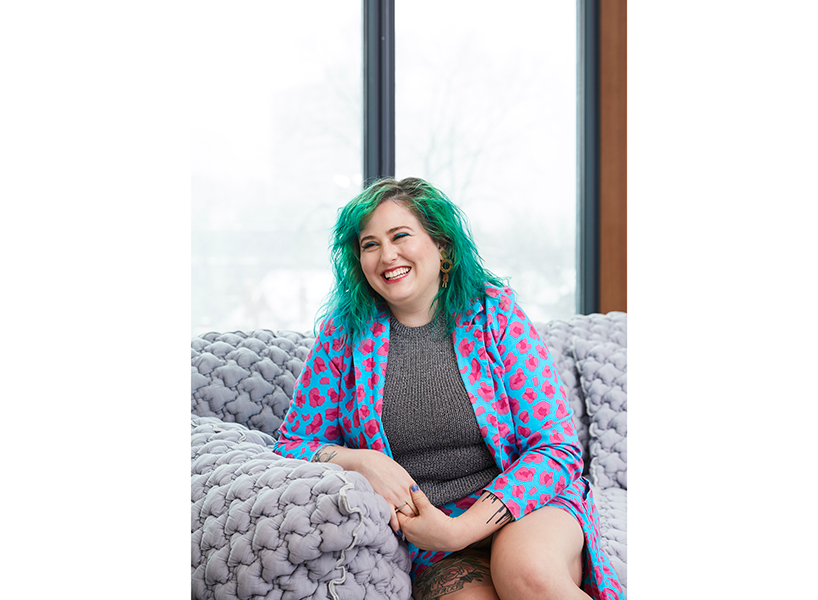
On diversity and what still needs to change
Lora: Growing up, I had no choice but to shop fast fashion. My family didn’t have a lot of money and we lived in a small town. It wasn’t until I moved to Toronto that I even could find trendy clothes in my size. One of the first stores I started going to was Forever 21 because it was one of the only places, if not the only place, that I could find stuff that fit me that was also on trend. But in 2019 I’m seeing a lot more progress, and it’s finally coming from the top down, with designers like Christian Siriano. I think this change had a lot to do with the fact that plus-size women aren’t just buying clothes; we’re actually going to shows now so designers have to look us in the eye and tell us why they’re not making clothes for us.
Hayley: As a designer, that was a decision that I made. Growing up I was kind of always like, “I don’t look like the people on the runway so there must be something wrong with me.” And at my shows I’m like, “I’m going to have representation, everyone in the audience will see themselves on the runway.”
Bree: I’m a fit model for a really large clothing company and often it will be me and then a [straight-size] sample model. And the majority of the time they will book me for the whole day, and they won’t even use me because they can’t be bothered to take proper measurements for plus sizes.
Cynthia: I think it’s one thing to have plus-size models on the runway, but what happens after that? These changes need to be taken further. There need to be more plus-size mannequins, there need to be more plus-size samples, so that in PR when we send things out to editors and stylists we have more options.
Odessa: And it’s not just plus models, it’s all kinds of diversity. It’s not hard to make people feel included, it’s just that that’s not how the establishment has worked for so long.
Photography: Carmen Cheung
Styling: Ingrie Williams
Makeup: Wendy Rorong
Hair: Jesse Ervin
Assistant: Tara MacInnis
Location: The Selby
Related:
See All the Looks from Karl Lagerfeld’s Last Collection for Chanel
The Response to Mikhael Kale’s Show Suggests the Toronto Fashion Scene Has No Desire to Change
New Rule: Fashion Brands Are No Longer Allowed to Claim Ignorance After Racist Missteps


